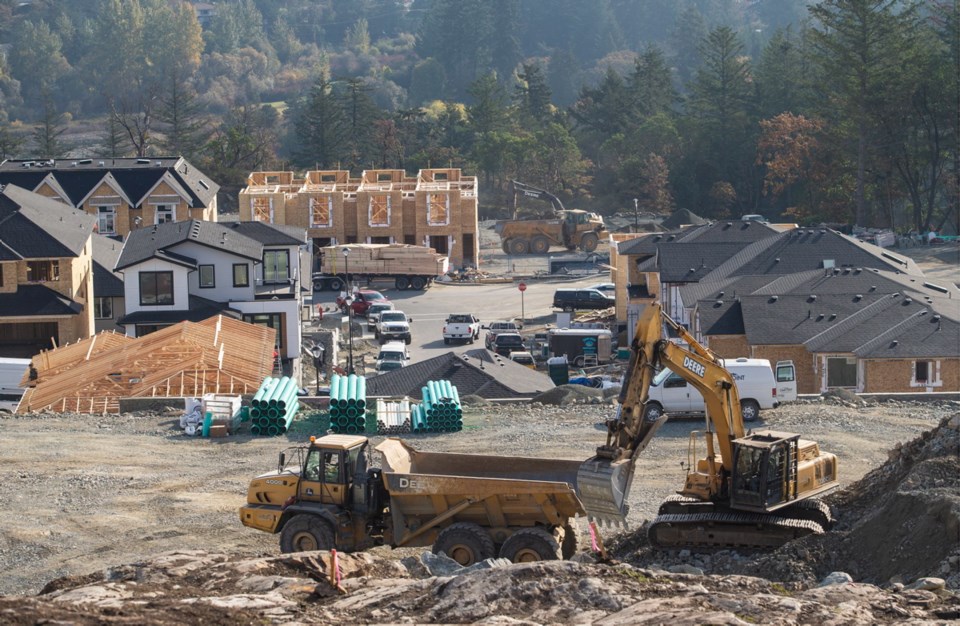Greater Victoria’s housing market has a “high degree of vulnerability,” despite slowing price growth, says the Canada Mortgage and Housing Corp.
The capital region is not alone. Vancouver, Toronto and Hamilton are in the same category, the federal agency said in its quarterly housing market assessment released Thursday.
Strict mortgage rules, rising interest rates and smaller growth in inflation and adjusted disposable income has led to less demand for housing and easing prices, the report said.
With Greater Victoria, “market balance improved, largely due to an increased availability of the most expensive units on the market,” the report said.
An agency analysis did not find overbuilding in the capital region. But it noted that homes priced at $1 million and higher “dominated the inventory of complete and unsold units.”
That fits with what the Victoria Real Estate Board has been saying. Demand has been strong for single-family homes in the $800,000-and-less range, but weaker for the higher end homes.
Greater Victoria properties have some of the country’s highest prices. The benchmark price for a single-family house in the core was $883,700 in September. Condominiums in the core had a benchmark of $503,000.
The core represents Victoria, Oak Bay, Saanich, Esquimalt and View Royal. A benchmark price refers to a typical home in a particular location.
In the second quarter of this year, average prices rose year-over-year by six per cent, compared with nine per cent in the first quarter.
Braden Batch, CMHC senior analyst, said the sales-to-new-listings ratio shows that number is coming down in the capital region. As of August of this year, the trend in total sales was 35 per cent below a peak reached in April 2016.
At that time, single-family sales represented 60 per cent of local real estate sales, Batch said. Today, single-family sales have dropped to close to 50 per cent. The market shifted to more affordable homes, with the 10 per cent of sales moving to row and semi-detached homes, the report said.
At the same time, Victoria is densifying, which means the market will move toward condos and attached homes. The demand for condos is also being driven by desire by some people wanting to live centrally, Batch said.
“Condos have represented a large share of new housing supply for quite some time,” Batch said.
The trend has shown a drop in new listings every month of this year, driven by fewer condo listings. Condo sales may have been affected by the shortage of inventory, the agency said.
Sales of single-family houses are tracking on the five-year average while condo listings are “very low relative to demand,” Batch said.
The number of days on the market has increased for all segments of the real estate market, including condos, Batch said.
Greater Victoria has seen a building boom in condominiums in recent years. New owners are starting to move into condos started two years ago, he said.
Capital region homes on the market show “high evidence of overvaluation” for the sixth consecutive quarter, the agency said.
The region’s high employment rate is pushing wages up and an increase in the number of young buyers in the second quarter are seen as fundamental factors affecting prices.
CMHC said it sees vulnerability as imbalances in the housing market, attributed to overbuilding, overvaluation, overheating and price acceleration.
The report cited an extreme example of a vulnerable housing market, in the 1980s and early 1990s in Toronto, when a housing bubble caused real estate prices to skyrocket in a short period of time.
The agency’s report noted that there continues to be overbuilding — where rental vacancy rates or inventory of unsold new-builds are higher than normal — in Edmonton, Calgary, Saskatoon, and Regina.



